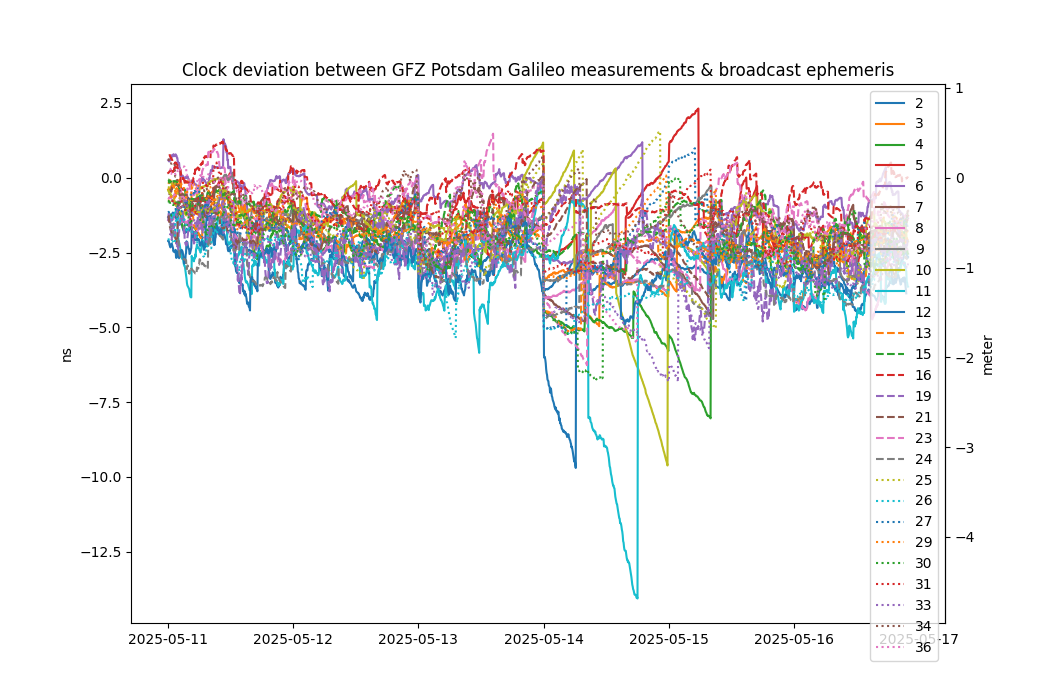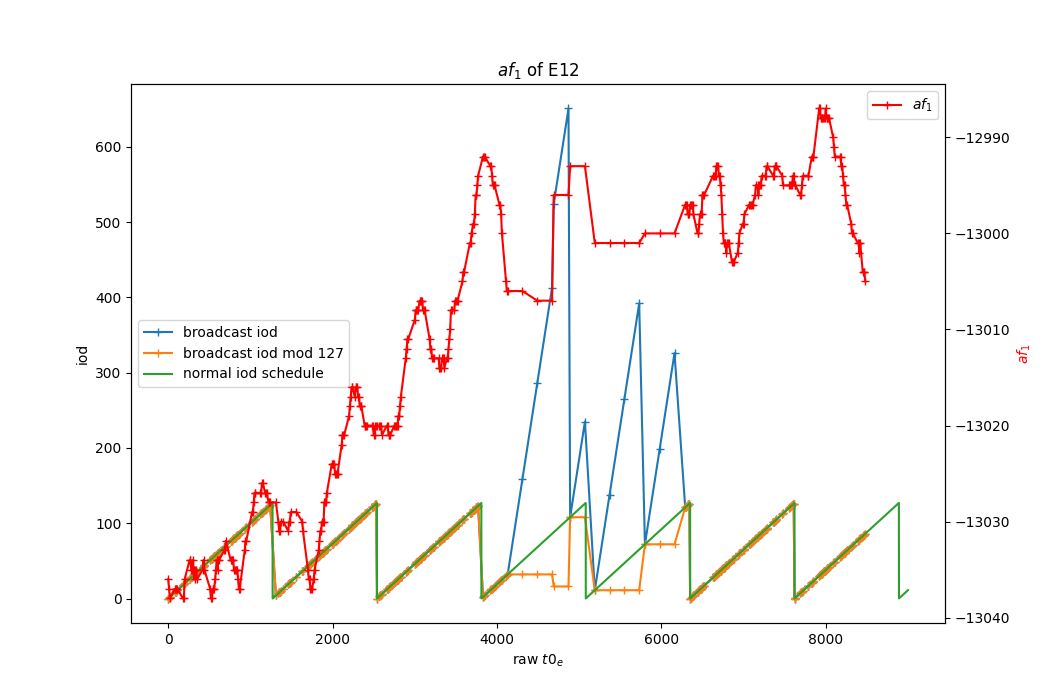Galileo's Testing Communications
When Galileo (the European satellite navigation system) was proposed there was a lot of criticism. “We already have the US GPS”, and we’d always be able to rely on our historical partner to take care of us. The US very much also said this. Yet, the EU persevered and now we have an independent worldwide navigation capability. And given recent developments, I think we can be well pleased that we don’t have to rely on the US, China or Russia for this vital need!
The very short version: Galileo is lovely EU infrastructure, a shining light of digital autonomy, but the communication about the service continues to be terrible. Three weeks ago a notification was issued announcing a possible Galileo disruption 5 days from then, “due to testing”, with no detail at all. During the testing, Galileo transmitted outdated data, confusing and upsetting professional users, who received no explanation. I urge the EU and EUSPA to take their users seriously and in the future report in an adult and timely fashion on (potential) problems. And not do tests that actually put the service at risk! The Galileo Agency EUSPA was offered more than a week to respond to this article, but they chose not to.
June 1st update: There are now formal questions in European Parliament: Reliability concerns in the Galileo global navigation satellite system
Not only do we (Europe) have “our own GPS”, in many ways it is the most advanced global satellite navigation system (GNSS) around. It uniquely offers such advanced things as the High Accuracy Service (HAS) as well as cryptographic assurances useful for the general public (OSNMA).
Also, it is used by every car, phone and smart watch sold over the past few years. A resounding success. Galileo is vital infrastructure on which cars, ships, building projects, the communication and energy sectors rely 24/7.
But it is not all roses. Galileo is the only purely civil GNSS and this should allow them to communicate somewhat more freely than the military GPS, Beidou and GLONASS projects.
This has historically however not been the case. Service disruptions in Galileo have routinely been denied, and then later mis-explained. I wrote about this earlier, and there have also been various articles in the press.
This last link has the memorable quote “’We can’t provide a running commentary,’ official says after EU forced to take satellite navigation system offline”.
The mysterious test that could have disrupted services
On May 7th 2025, the EU Agency for the Space Programme (EUSPA, not to be confused with ESA) published NOTICE ADVISORY TO GALILEO USERS (NAGU) 2025016 TESTING ACTIVITIES.
I once asked them WHY THEY PERSIST WITH ALL THE SHOUTING. Originally, GPS “NANUs” were published in all caps, perhaps because naval telegram infrastructure did not offer lower case. Galileo was invented when we already had non-capital letters. I did get a response, there is no technical reason for ALL THE UPPER CASE IN THEIR UPDATES. They just like it that way!
It does make things hard to read. I transcribed the testing NAGU 2025016 into lower case for you:
NAGU Subject; Testing activities
Satellite affected: All
Date generated (UTC): 2025-05-07 13:15Event description: Users are informed that due to testing activities, the Open Service and the High Accuracy Service will experience degradations up to temporary disruption of service from 2025-05-12 at 06:00 UTC.
The completion of the testing activities is estimated to be on 2025-05-19 16:00 UTC.
During this period the signal in space is expected to deviate from the minimum performance levels defined in the published OS and HAS service definition documents and signal in space interface control documents.
Well now. This notice tells us that in 5 days time, Galileo will experience “degradations” up to temporary disruption of service. The Galileo people communicate with great precision, if not with great clarity. Because they say “up to” and not “up to and including”, we are to understand that many things might go wrong, but that services should not temporarily be disrupted. I think.
The last paragraph is also very special. Satellite signals are expected to deviate from the minimum performance levels. You could interpret this as that things will be even better than the MINIMUM defined performance levels. But this is probably not what they mean.
I immediately asked the Galileo press office what they meant with this testing, and if they could provide some more detail. A very large scale professional Galileo user did the same thing. Neither of us received a useful reply. We did learn however that the cryptographic OSNMA service would stop during the testing, which was not in the NAGU.
Such poor communications do nothing for trust in the Galileo service. What kind of testing leads to possible service disruptions? Why only announce that 5 days in advance? Why the cryptic wording? Why even do testing that could lead to service disruption? Is something else going on?
If you knew where to look, you could find the page “Upcoming Galileo Testing Activities” which contained the following gem of a sentence: “A degradation of performance and service interruption may occur [during testing] – this is normal and anticipated”. Personally, I do not find this normal. Nor this: “This situation could cause disturbances for the user communities worldwide”. There is now another page which features an apology and also says there are no plans to repeat this kind of test (thanks!).
But still, do the Galileo people (& governance) realize that they are providing critical infrastructure?
EUSPA was sent a draft of this article a week before publication, to offer them the opportunity to respond (within this blue box). After a week they told me (incorrectly) that the European Commission had already answered my questions, and that they had nothing to add.
So what could we see happening during the testing?
Satellite navigation is based on the concept that the satellites broadcast their own location with stunning accuracy. They also send us data that allows us to find out the exact time signals were sent to us. The combination of the satellite time and location data in turn allows us to figure out where we are.
In order for this to work, Galileo ground based infrastructure measures the satellites’ orbital behaviour and clock performance, and frequently sends updates to the satellites in space, which keeps them sending out correct data. If no such updates are sent up, the accuracy of location and clock data eventually degrades. Usually updates are provided multiple times per hour.
During the testing, for a dozen hours or more, no updates were sent:

Data courtesy of GFZ Potsdam / processing by galmon.eu
This meant that any errors in satellite clock speeds were not corrected. Galileo satellite E11 has a notoriously bad clock (still a thousand times more precise than your non-atomic clock, to be clear). And above we see that eventually an error of 14 nanoseconds built up, which leads to positioning errors in the order of 4.5 meters. A few other satellites had errors of up to 9 nanoseconds (= 3 meters). (Data provided by ESA shows a comparable picture).

Data from the galmon.eu station operators
Periodically over the testing period, it appears bursts of new data were sent to the satellites. Here for satellite E12 there appear to have been four separate bursts over the course of 1.5 days of (visible) testing. Each burst can be recognized as a step change in the orange line.
So what did they test?
This was quite a weird test. For long stretches of time the satellites did not receive updates. It is a good thing most satellites were stable during that time – this is not always the case. Only satellite E11’s clock drifted unacceptably. All orbits remained stable, the Galileo people can predict these exceedingly well.
But what was actually tested? From previous failures it was already known that the satellites can keep transmitting old data for quite some time.
Did they perhaps try to shift between the two Ground Control Centres in Oberpfaffenhofen (Germany) and Fucino (Italy)? From the wording of the NAGU we know they anticipated that things could go badly. The transfer between two GCCs however should not be this traumatic. Because we should be clear, this level of disruption would be an emergency if it hadn’t been pre-announced. This alone makes the test very weird. Usually tests are not visible (if they succeed!).
I’d love to have confidence in Galileo, but the extremely limited communications leave a lot of room for speculation. Especially since the 2019 outage was not communicated correctly, where a very senior EU official initially attempted to blame one guy for the whole thing.
The testing also looks a lot like a “hot” migration to perhaps new software on old hardware. That we can observe four restarts of data provisioning is congruent with this not quite working well. If this is a “hot” migration it isn’t really that much of a test. More like a migration masquerading as a test. Or it could be resilience testing?
That this test was only announced a few days in advance also does not instill a lot of confidence this was a well planned activity.
Please communicate better
I appreciate nothing really went wrong during this testing. But the communications were still atrocious. It is fine not to supply me with a useful response, but a large industrial user of Galileo also got no additional information. They had no idea what was coming.
Life within a large consortium is not easy, I do get that. But almost any communication would’ve been better than this cryptic NAGU. There also was nothing on the Galileo news page.
I want to celebrate Galileo as a wonderful EU achievement, full of exciting new things like the High Accuracy Service (HAS), the cryptographic assurance (OSNMA) and the upcoming Emergency Warning Service.
But it does help if we aren’t left guessing why the satellites are broadcasting outdated data, for some kind of test that apparently could lead to service disruptions, which was announced 5 days before it started.
So I kindly ask that the EU and the EUSPA attempt to improve their communications.
